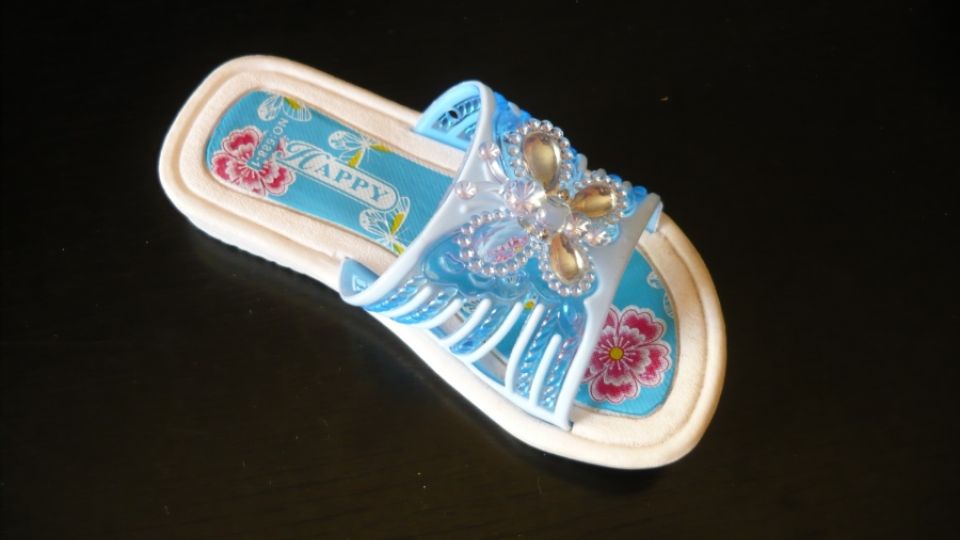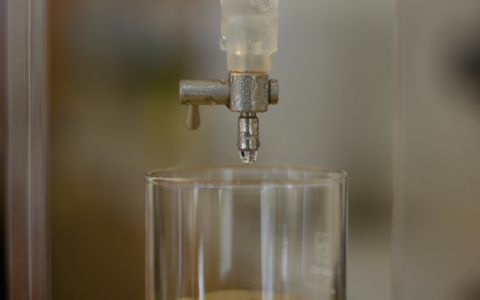High concentrations of toxic substances were proved by chemical analyses in several samples of commonly available summer shoes. Arnika commissioned tests of, in particular, children footwear, because just children are a risk group that should avoid contact with toxic and hazardous substances. In particular, phthalates DEHP and DiBP, hazardous especially for human hormonal and reproductive systems, were found in the children shoes. In several samples, lead presence was proved, too. Lead is linked especially to negative impacts on the nervous system. Only one pair of shoes contained neither risky phthalates nor lead. This proved inadequacy of legislation that should protect consumers. Use of hazardous phthalates is banned in a number of products, for example in cosmetics, however, the ban does not apply to shoes.
A table listing questionable shoes may be found here>>
„We consider this to be a serious defect, for several reasons. Shoes, analyses of which we commissioned, come into direct contact with skin. In the case of children, it is further difficult to assess whether they would not also play with the shoes. Decorations, where up to 44 % of reprotoxic phthalate DEHP was found, highly attract children to do that. Another paradox is that the current legislation essentially does not protect the consumers from negative impacts of phthalates. Use of risky phthalates is completely legal also in plastic raincoats and floor coverings,“ explains Ing. Miroslava Jopková from Arnika.
„It is not clear why limits of hazardous substances have not been set for children shoes, similarly as in the case of other products for children. We are surrounded by thousands new chemical substances, being permanently discovered. We do not always have sufficient information on their impacts on a human organism. However, I am convinced that in the cases when high suspicion of their harmfulness is proved, it is important that public health protection institutions react immediately. At first, by giving information available to the general public, at least. Parents have to be sure that goods offered in our country for their children is safe! Manufacturers and importers of Chinese goods must not have priority over health of over children,“ says the senator RNDr. Jitka Seitlová, vice-chairwomen of the Committee for Regional Development, Public Administration and Environment.
Arnika has submitted a complaint to the Czech Trade Inspection Authority, that should examine the products now.
In the children shoes, there was found, in particular, reprotoxic phthalate DEHP, and also DiBP, in concentrations from 8 to 44 % by weight. The highest amounts of phthalates were found in decorations of shoes resembling the ones of the „Crocs“ brand, and also in the parts of shoes that come into contact with skin of the most sensitive parts of foot, such as instep. Both these phthalates rank among substances negatively impacting human hormonal and reproductive systems, and are harmful to liver.
In April this year, the ECHA agency submitted a proposal to restrict four obligatorily classified phthalates, including DEHP and DIBP. If industrial lobby is not too strong, it is just a question of time when these phthalates will be completely banned in Europe. However, it is sad that the whole process of their restriction takes such a long time, and concerns certain phthalates only,“ continues Miroslava Jopková.
In several samples, also lead presence was proved. The highest concentration of this hazardous heavy metal was found in the colour used for treating artificial leather of sandals for boys. Lead concentrations in darker (it means, more coloured) parts of the artificial leather reached almost 10 g/kg of the material. Just, lead content was close to 1 % by weight. Arnika commissioned leachabilty tests of these shoes. The tests showed that the amount of lead released from them is rather high, too. It was about 14 mg/kilogram. It means that the limit for lead leaching from products was exceeded 70-times. (3)
Lead is linked to negative impacts on the nervous system, behaviour disorders, and intelligence decrease, proved in low doses already, especially in children. In the case of adults, lead increases blood pressure, and is harmful to kidneys. According to scientific conclusions, a safe exposure value does not exist in the case of lead.
Lead absorbability through skin is relatively low. However, there cannot be neglected another way through which this hazardous element may get from shoes to the child body. Child or adult touches shoes by hands several times a day. From the hands, lead gets into the body easily, for example with food, or through inhalation. Hygiene plays an important role here, too. It is also necessary to mention that there was not scientifically found a safe exposure value for lead - it means lead amount that would be so-called safe for humans.
Arnika works at the problem of toxic substances in products for children in the long term. „In the past, presence of hazardous phthalates was very common in products made of softened PVC. After awareness of problems connected with these softeners raised, and, subsequently, legislation changes were made, hazardous phthalates are found less often there. Nevertheless, it is still necessary to consistently supervise that manufacturers really do not use these substances,“ adds Miroslava Jopková from Arnika.







